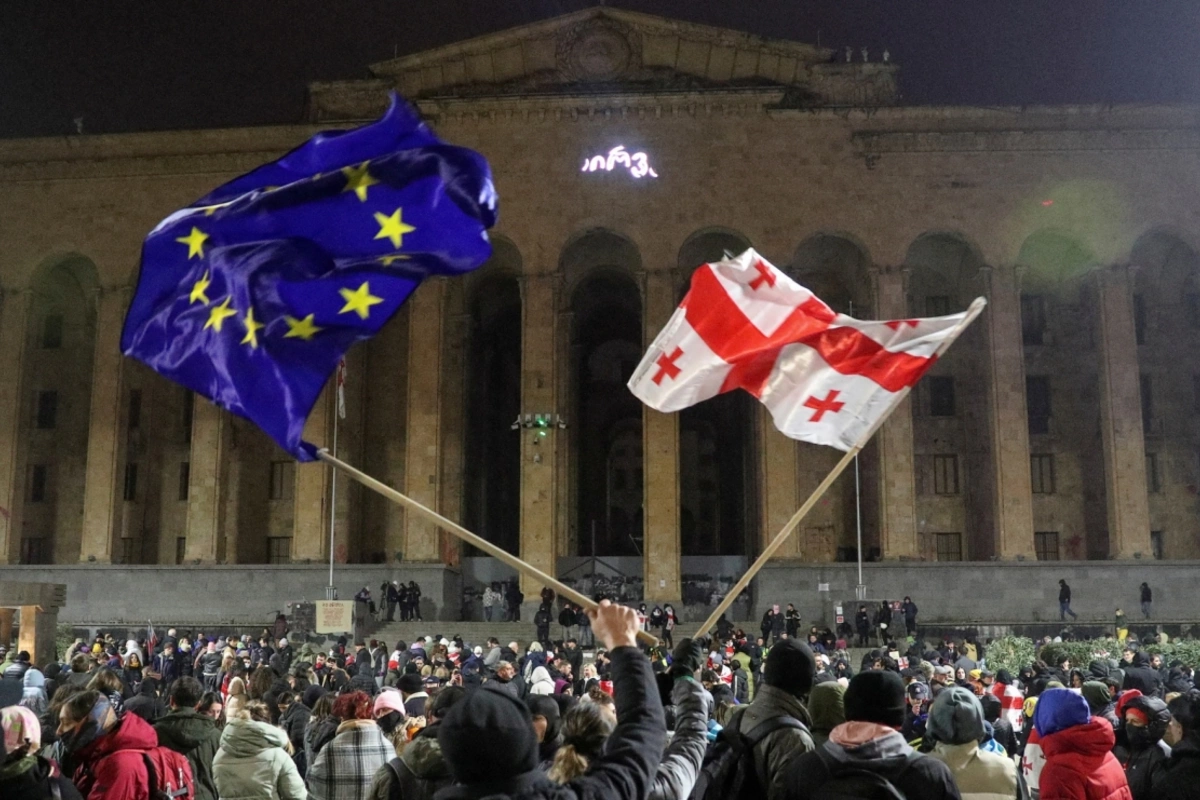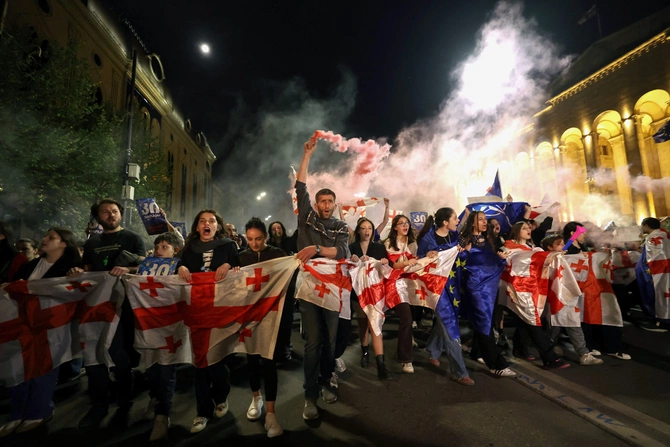
By Samir Muradov
December 28 marked a significant milestone in Georgia’s political landscape, symbolizing a month of protests by pro-European integration supporters. It all began with disputes over parliamentary election results, escalated into debates about halting the EU accession process, and eventually led to discussions surrounding the presidential election. A key feature of this protest movement was the "Chain of Unity" event, held across five major cities: Tbilisi, Batumi, Kutaisi, Rustavi, and Gori.
The event gathered thousands who joined hands to form a symbolic chain, expressing their support for the country’s European aspirations. Videos of the event quickly went viral on social media, attracting attention both domestically and internationally.
Organizers emphasized the peaceful nature of the demonstration, highlighting the importance of citizen unity in pursuing EU integration. Despite its symbolic success, the event concluded by 3 PM and had minimal immediate impact on the political situation. Notably, major opposition media outlets provided little coverage, which could reflect a lack of coordination or internal divisions within the protest movement.
The morning of December 29 marked the end of President Salome Zourabichvili’s term, serving as another rallying point for protests. The opposition announced plans for fresh demonstrations in front of the parliament and the presidential residence. However, by 9 AM, turnout was sparse, forcing organizers to delay the start to 11 AM to coincide with the inauguration of the new president, Mikheil Kavelashvili.

Creator: GIORGI ARJEVANIDZE | Credit: AFP via Getty Images
While initial turnout was low, public attention shifted to Zourabichvili’s actions. Her refusal to vacate the presidential residence and her promise to announce further steps added intrigue to the unfolding events. However, the ruling party adopted a firm stance, warning that legal action could follow if procedures were not adhered to.
Mikheil Kavelashvili’s inauguration occurs amid heightened political tension. The new president faces critical challenges, including fostering dialogue with the opposition, rebuilding public trust, and defining a development path that satisfies both sides. The enduring relevance of the protests and the prominence of EU integration in public discourse complicate his task.
Kavelashvili must navigate between two polarized positions: those advocating for a European trajectory and others supporting a more measured approach to international relations. His initial actions as president will need to focus on de-escalating tensions and finding compromises.
The outgoing president remains a central figure, not only for her stance on EU integration but also for her defiance in relinquishing the presidential residence. Her statements about future plans have sparked interest, though their potential impact on the current situation remains uncertain.
Zourabichvili’s actions may play a dual role. On one hand, they could galvanize the protest movement into further action. On the other hand, they risk being perceived as attempts to cling to power, potentially eroding trust among the opposition and the public.
Georgia’s protest movement has shown the ability to rally citizens around a shared vision but has encountered significant organizational challenges. While the "Chain of Unity" was symbolically important, it failed to translate into substantial pressure on the government. The lack of a clear agenda and long-term strategy limits the protests’ effectiveness.
For the opposition to succeed, they must offer more than emotional slogans-they need concrete solutions to pressing issues. Without this, the protests risk losing public and international support.
The situation in Georgia remains dynamic. While the protest movement reflects a segment of society’s willingness to assert their positions actively, weak coordination and a lack of clear plans cast doubt on its efficacy.
For the new government, the priority will be not only restoring political stability but also building bridges with the opposition. Resolving issues around EU integration, election transparency, and public trust in state institutions will likely shape the country’s political trajectory.
The protests in Georgia, including the "Chain of Unity," have become a significant part of the current political agenda, emphasizing societal aspirations for EU integration and the need for reform. However, the future of the protest movement and the country depends on all parties’ ability to present constructive solutions and engage in meaningful dialogue.
Amid a change in leadership and high political tension, Georgia stands at a crossroads where every action-by both the opposition and the ruling party-can have long-term consequences.
Share on social media